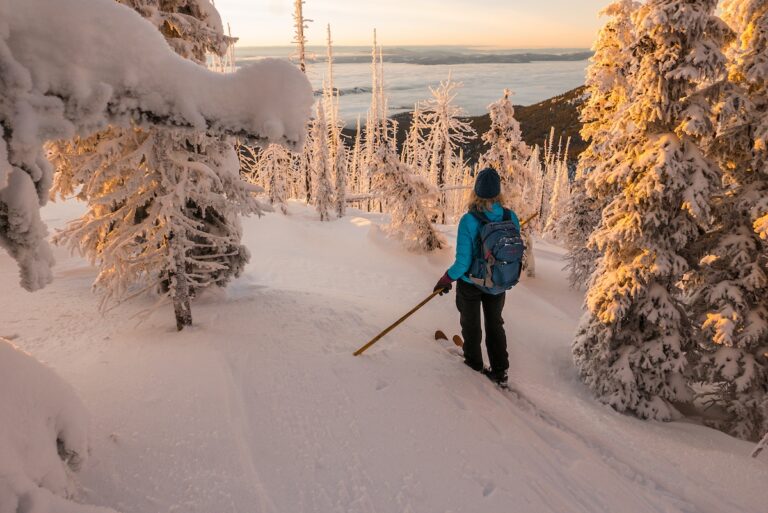Day Hiking Columbia River Gorge
Craig Romano
The Mountaineers Books, 2011, 288 pages
I am writing this book review as I travel by train through the Columbia River Gorge. Every time I visit this area I am reminded of its other worldly beauty. In addition to providing the detailed information you need to enjoy all of the hiking and natural wonders that the area has to offer, Craig Romano’s book captures the magic of the Gorge. For example, in the preface he states, “Nowhere else in America does one of her mightiest and longest rivers slice through one of her longest and most dramatic mountain chains…and nowhere else in the country are there so many waterfalls, nor is there such a dramatic shift from wet, saturated coastal mountains to arid, sun-kissed flowered bluffs.”
This guidebook describes day hikes from the Portland/Vancouver area in the west to The Dalles area in the east. Each hike is provided with two ratings: a rating based on overall appeal, and a score that describes the difficulty of the hike. The overall rating, as described by the author, “is based on scenic beauty, natural wonder, and other unique qualities, such as solitude potential and wildlife-viewing opportunities.”
In addition to an extremely well-organized layout of hiking information, complete with helpful maps and great photographs, Romano also provides fascinating details concerning the natural history and the human history of the area. For example, in describing Horsethief Butte, he states, “Created by ancient lava flows and carved by floods of biblical proportions, the butte is an excellent place to contemplate the region’s fascinating natural history.”
Having recently moved to Vancouver,Wash., I explored several of the hikes in Clark County. One particularly enjoyable hike was along the East Fork of the Lewis River in Lewisville Regional Park. This is a beautiful natural area, highlighted with huge old-growth fir trees. The guidebook proved to be spot on in its directions, description and hiking details.
I highly recommend this book for anyone who enjoys hiking. Some of the hikes in this guidebook are only a four-hour drive from Spokane. If you haven’t explored the Columbia River Gorge, this is a great book to get you inspired and prepared.
Peter G. Williams
One Mountain, Thousand Summits
Freddie Wilkenson
AL, 2010, 352 pages
As you read this review, the author of One Mountain, Thousand Summits will be discussing his work at the Banff Mountain Book Festival. Those attending his “seminar” on November 2, 2011 will have an opportunity to gain a firsthand look at the how this potentially award-winning work was born.
The death of eleven climbers on K2 in August 2008 made it one of the worst single events in Himalayan climbing history. The event made headlines around the world; Wilkenson was upset by the overall tone of the mainstream media coverage. One Mountain is his attempt to set the record straight. Where world media coverage focused on the carnage in the deaths of nine Western climbers and two sherpas, Wilkenson dug behind the headlines to reveal a story of heroism and professionalism among the climbing guides.
One Mountain, though covering the same events as Graham Bowley’s No Way Down carries an entirely different tone. Where Bowley limits his work to the “interpretation” of information gleaned from interviews with the surviving climbers, Wilkenson uses his climbing background to place the interviewee’s fogged recollections into a whole, consistent with his experience. Nor does he seem to fret about the jargon of climbing. He writes in a style consistent with modern climbing narratives and develops credibility for it.
Unlike the mainstream media, which relied on a few online sources sponsored by some of the expeditions on the mountain and which focused on the fate of the Western climbers, Wilkenson viewed the overall struggle for survival. He includes the “big picture” on the mountain that day but concentrates on the actions of a small group of sherpa climbers attached as guides for the organized groups.
Adding in-depth interviews with the surviving sherpas to those of the surviving climbers and the families of the deceased, Wilkenson is able to provide a complete picture of the events on K2—“the savage mountain”—that August. In doing so, he creates an important historic account and a tribute to the skill and professionalism of the 21st-century Sherpa climbing community.
Stan Miller













